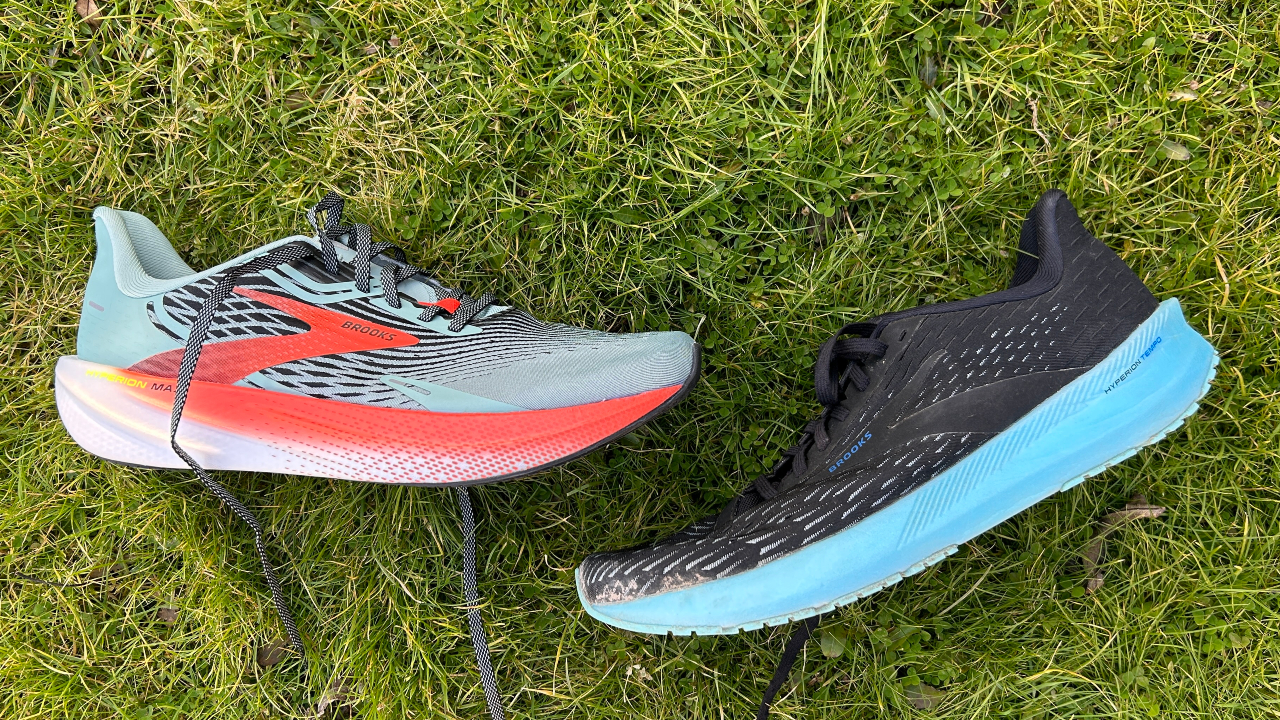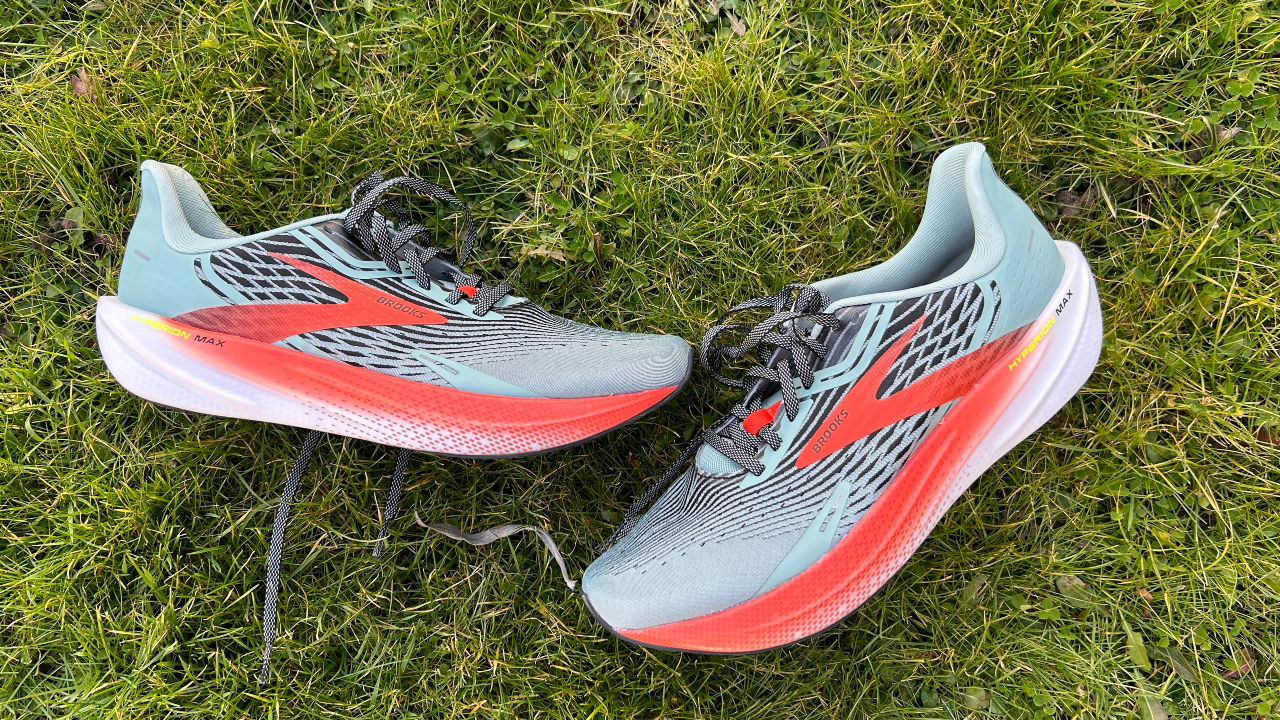Our Verdict
The Brooks Hyperion Max is a great running shoe, and I enjoyed putting it through its paces during a range of training, but it doesn’t stand out against rivals that offer better value. And if you’re happy to use a plated training shoe, you will get a higher level of performance elsewhere.
For
- Light
- Some will prefer plateless design
- Responsive midsole
Against
- Lacks punch of plated shoes
- Firmer ride
- More expensive than competition
You can trust Coach
The Brooks Hyperion Max is a simple running shoe compared with most of its competition. It doesn’t have a plate, it uses only one type of foam in its midsole, and even its rocker geometry is subtle in comparison with others.
It is a strong option for those who prefer a firmer ride and a lightweight shoe, and who don’t like using plated shoes in training. However, it doesn’t make the grade in the best running shoes, and it’s too expensive, considering you can get outstanding shoes in the same category for much less.
Brooks Hyperion Max Review: Price And Availability
The Brooks Hyperion Max launched in early 2023 and costs $170 in the US and £160 in the UK. That’s an aggressive price, since it makes the shoe more expensive than other plateless options like the Hoka Mach 5 and New Balance FuelCell Rebel v3, and the same price as top plated trainers like the Saucony Endorphin Speed 3 and Asics Magic Speed 2.
Design And Fit
The Hyperion Max joins the Brooks range as a more cushioned, rockered alternative to the Hyperion Tempo (soon to be known simply as the Hyperion). Despite the Max in its name it doesn’t have a stack of cushioning: Brooks hasn’t confirmed the stats to me, but it looks to be around 30mm at the heel, and the shoe has an 8mm drop. It’s not better cushioned than the Tempo, though the presence of the more rockered design was evident in testing.

As with the Hyperion Tempo, the Max is a lightweight, straightforward shoe. It has a midsole made from Brooks’s DNA Flash foam, which is a nitrogen-infused EVA that has a firm and responsive feel. It’s not a dual-density midsole and there’s no plate in it, but the lack of tech in the shoe means it’s light – 7.65oz/217g in my UK size 9.
The upper has cushioning around the collar and an internal heel counter, though in the main this is a stripped-back affair made from a thin, breathable mesh. The shoe fits well in my normal size.
Given how light the shoe is, there is an impressive level of rubber coverage on the outsole at the forefoot and heel. Because DNA Flash is a long-lasting foam, I expect the Hyperion Max to be a durable shoe and there are certainly no signs of wear after 50km.
Sign up for workout ideas, training advice, reviews of the latest gear and more.
How I Tested This Running Shoe
I’ve run 50km in the Brooks Hyperion Max, using it for a mix of training runs. My longest run in the shoe so far is 16km, and I’ve used it for speed sessions on the road and track. I have also tested the Brooks Hyperion Tempo.
Running Performance

I’ve not had a bad run in the Brooks Hyperion Max, which I’ve found to be versatile for easy plods as well as interval sessions. However, I’ve also not had any particularly great runs in the shoe, which just feels muted compared with the other options available.
The ride is smoother than the Hyperion Tempo, but the rocker wasn’t that pronounced for me, and the transition from heel to toe is still more snappy than smooth. It’s a fairly firm shoe, which starts to tell over longer distances. It’s better for runs up to 10km, but for anything over that I’d prefer a more forgiving, cushioned ride.
For faster runs, the Max feels great during short reps, where the lightweight, nimble design and responsive foam makes it feel like an old racing flat, just with more protection from the foam so your legs don’t feel trashed the next day.
However, during longer reps it doesn’t provide as much propulsion as shoes with plates or bouncier foams. The DNA Flash midsole is consistent, in that it doesn’t bottom out over longer runs, but it doesn’t pack the punch of the PEBA-based or TPU foams used in other shoes.
Is The Brooks Hyperion Max Worth It?
While I enjoyed running in the Brooks Hyperion Max and think it’s a decent shoe, it’s a hard one to recommend given the high price and the competition it’s up against. If you don’t want to use plated shoes in training, whether that’s because you think they could contribute to injuries or want to save the plated boost for race day, then it’s a good option – though even there I’d look elsewhere first.

The New Balance FuelCell Rebel v3 is cheaper and equally light, and the FuelCell midsole has a softer, bouncier feel than the Hyperion Max. The Hoka Mach 5 is also light and has a smoother, more comfortable ride than the Brooks, making it a better option for longer runs in particular. The Hyperion Max may prove more durable than those shoes and some might like its firmer ride more, but I prefer to use the Mach 5 and Rebel v3 for the same kind of runs myself.
If you have no qualms about using a plated shoe in training, which I don’t, then there are three great options available in the Saucony Endorphin Speed 3, Asics Magic Speed 2 and Puma Deviate Nitro 2. All three are around the same price as the Brooks or cheaper, and are impressive all-rounders with more propulsive and comfortable rides.
Aside from its price, there’s not a lot wrong with the Hyperion Max, and I’d be happy to use it for pretty much all my runs – but it is outgunned by the competition.

Nick Harris-Fry is a journalist who has been covering health and fitness since 2015. Nick is an avid runner, covering 70-110km a week, which gives him ample opportunity to test a wide range of running shoes and running gear. He is also the chief tester for fitness trackers and running watches, treadmills and exercise bikes, and workout headphones.

